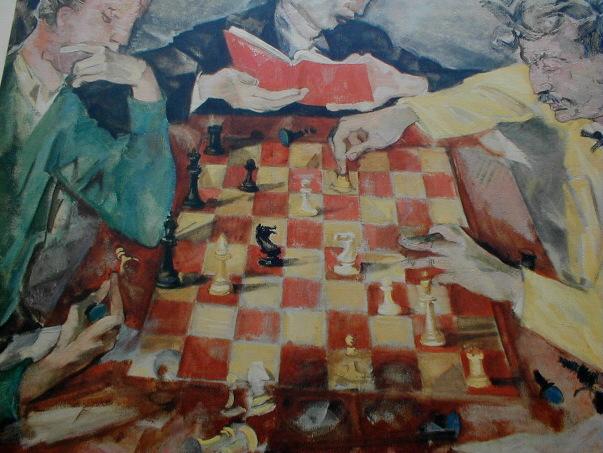JTF Endgame book
Intro:
The characteristics of the endgame are:
1) Endgames favor an agressive king
2) the importance of passed pawns is greatly increased in the endgame
3) Zugswang is often a factor
If you want to win at Chess, begin with the ending -
Ruebin Fine.Some rules that apply to the middlegame and opening actually reverse themselves in
the endgame.
A passed pawn increases in strength as the number of pieces on the board
diminishes. -
Capablanca
C2: Pawn Endings: Atomic Chess
There are 2 principle features that determine play in any pawn ending-
1) Position of the Kings
2) Presence of passed pawns.
P1 King and One Pawn
Chances of Winning
K+1 vs K 50% chance of win
K+2 vs K 90% chance of win
K+3 vs K 95% chance of win
* If you have an extra pawn advance your King ahead of the pawn.
* If a pawn can be supported by his King often blocking is the only defense which
often draws
* You can't stop a pawn from the side,
BLOCK IT.
* You can't stop a pawn from behind,
BLOCK IT.
Blocking a pawn does not always work except if it is a rook pawn.
Often when opponents interupts the path of a chasing King, counting squares should
be used instead of the rule of a square
The Three rules for winning a pawn up game:
1) Move your king in front of your pawn
2) With the king in front of pawn either diagonally or directly in front you will win, unless your opponents gets the Opposition.
3)With the king on the sixth rank(non rook pawns) in front of your pawn you always
win regardless who is on move.
If the pawn advances to the seventh rank in front of the king with a check this is
a draw.
"Advance with check, your game is a wreck"
A pawn hitting the seventh rank without check it is a win.
Rook Pawn: When Living on the edge can be safe
* One can often corrall a King into a stalemate on the Rook file .
* When the Superior side pawn is a rook pawn (an a or h pawn) the win is impossible if the weaker side 's king takes possession of the the corners queening square or barricades the opponents king in that corner.
Safe Square- If the opponent can stand on a square and draw, it is a safe square.
*
Taking the opposition when ahead of the pawn diagonally inevitably leads to
having the oposition in front of the pawn. Passing the Move- Triangulation-
in order to take the oposition and force the opposing King from the key square,
you will often need to pass the move on to the other side. This is done through
Triangulation.
Calling in the ReservesOften a reserve pawn move can effective pass the move to grab the opposition.
The Moving Screen As in the moving Screen in Basketball, a King can move in the shortest route to his objective while preventing the opposing king to take the shortest route to hisobjective. Also known as shoulder pushing.
The moving screen accomplishes two goals. Allows one king to take the shortest
route to his goal while preventing one opponents king from doing the same.
The distant opposition:
By taking the opposition from a distant one can force a direct opposition as the Kings move closer
Unlike real life, stepping aside diagonally is as short a path as traveling straight ahead on a rank or file.
All Consistant King Moves Across the Board are of Equal Length -Mednis
The Classic Triangilation (look at example on pg 62)
If the King on Move can enter the square, it can catch the pawn.
Part II Passed Pawns;
The main task of a distant passed pawn is to distract the opposing king, while on the other side of the board it's own king attack defenseless pawns bereft of the kings support.
2 passed pawns, who on their own cannot promote, often serve as protection for
each other.
Capturing One would put the other out of reach of stoping the other: One can not
dance at two weddings.
Passed Pawns are meant to distract; the farthest one is from the opposing king the
strong it's ability to distract.
Breakthorough. 3 pawn directly across from 3 pawns seperated by a single rank . To Breakthrough move the middle pawn. ( then offer a Falkbeer like countergambit with the other pawn, one will have to pass !)
Summary: One should be alert to sudden transitions in the endgame.










